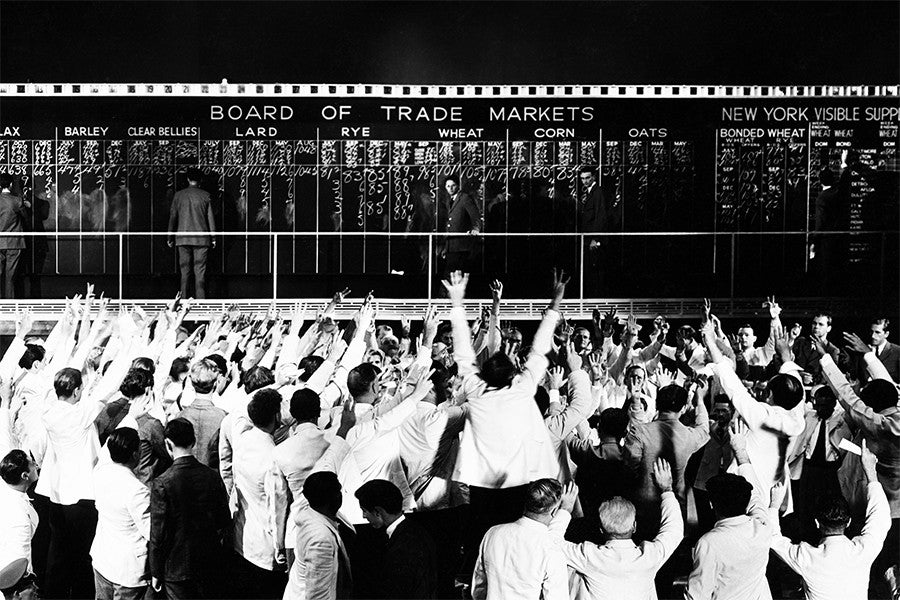Every once in awhile, some courageous soul will ask members of /r/personalfinance for tips on day-trading stocks, and get dunked on by commenters for even entertaining the idea.
“Looking for information on getting into day trading,” reads one recent post.
“Dont [sic] forget to update us in couple months (days??) to let us know how much you lost,” the top reply retorts.
Reactions would’ve likely been the opposite 20 years ago, when sites like E*Trade, Ameritrade and TD Waterhouse spent a combined $1.5 billion a year on advertising to convince everyday Americans to fire their brokers and begin picking and trading stocks themselves. These services offered lower fees for executing trades and convinced wide-eyed average Joes that they could make a killing playing the stock market from the comfort of their home PCs. So much so that “on-line” trading was a popular hobby in 1998 among eager 20-something men and retirees who grew bored with the golf course. Some people even made hundreds of thousands of dollars a day, according to financial columnist Michael Sincere.
But the idea of the at-home day trader seems as arcane today as hyphenating the word on-line.
“It was crazy popular in the 1990s, and even into the early 2000s,” says personal finance expert Cary Carbonaro. “But day trading is out of favor [today], for sure.”
Trading volume dropped following the 2008 economic downturn, and remained at atypically low levels for years afterward, as many were leery of what they viewed an unstable system. By 2012, Damien Hoffman, then the editor in chief of the Wall Street Cheat Sheet, declared at-home trading a thing of the past. “For the home-based retail day trader, I would consider the occupation as dead,” he told MarketWatch. “The opportunities are disappearing.”
It became even harder after the widespread adoption of automated trading, where investment banks started using software programs to execute thousands of trades instantaneously. Pit traders lost their jobs to computer programmers, and the day trader was left far behind.
“How are you gonna beat mathematical algorithms that can execute trades in thousands of a second to take advantage of small differences in the market?” asks Robert Weagley, chair of the personal financial planning department at the University of Missouri.
The rise and fall of day trading is maybe best reflected in the stock price for E*Trade, long the leader in online trading. E*Trade stock hit its peak at $577 per share in April 1999, amid the first dotcom boom. The stock fell rapidly thereafter, though, trading at less than $100 for much of the early 2000s, before surging to more than $200 a share in 2005. The price fell again during the 2008 housing and financial crash, and now trades at $34 per share (still good for a $9.6 billion market cap, but much less than in the home-trading heyday).
Personal finance experts are far from devastated by the death of day trading, however, as it signals people are smarter about investing. (Generally speaking, of course; as Carbonaro notes, there are still money-hungry young men today making equally risk investments, such as flipping houses or investing in cryptocurrencies such as Bitcoin.)
Weagley likens day trading to betting on horse racing, evoking an image of a degenerate gambler hopelessly cheering for his horse to make a move in the final leg. And Carbonaro says day trading in the 1990s was largely a get-rich-quick scheme, with a few success stories overshadowing the fact that a majority of people lost money.
It’s far safer to have a balanced portfolio and stick with it over the long term, and the quickest, easiest route to that is through an index fund (a collection of stocks that are pooled and purchased together to offer a diversity of investments).
“For most people, the core of their investments ought to be index funds,” Weagley says. “The U.S. market is the most efficient financial market in the world. So why not just bet the market and let it go?”
These funds generally perform better and are cheaper than actively managed funds. In his 2016 annual report, Warren Buffett slammed hedge funds for charging customers exorbitant fees, and said his investment in a low-cost S&P 500 index fund nine years earlier had outperformed hedge fund managers, for instance.
Weagley admits that this investment strategy is “boring as hell,” and lacks the panache and self-affirmation of finding that hot stock and watching it soar to new heights.
But as Carbonaro says, good personal finance means avoiding what’s sexy. “It’s not about get-rich-quick schemes; it’s about how to get rich slow.”
